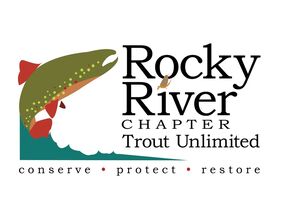Initial National Fish Conservation Area (NFCA) Planning Session was held in Franklin, NC on August 21, 2013
Many of the concerned leaders or representatives of resource conservation agencies and non-profit organizations as well as concerned individuals representing recreational and commercial interests for the Little Tennessee River watershed were lead through the initial planning process by facilitators. A common vision, mission, priorities, goals and objectives, success measures and potential projects for NFCAs in general and specifically to be used to execute the Little Tennessee River NFCA Pilot projects has been drafted for further circulation, comments and refinements among the many groups of diverse interests involved. A next meeting will finalize the plans to launch one or more NCFA projects within the Little Tennessee River watershed.
Native Fish Conservation Areas
|
Little Tennessee River (headwaters pilot projects) |
Native Fish Conservation Areas (NFCA) are watersheds where management primarily emphasizes conservation and restoration of native fish and other aquatic species, and their habitats, while also managing compatible recreational and commercial uses. The goal of Native Fish Conservation Areas is to sustain the integrity of key aquatic habitats in order to maintain long-term persistence of native aquatic species.
NFCSs provide a mechanism for a collaborative and coordinated approach at a watershed level to accomplish the conservation of aquatic resources. This approach incorporates the knowledge and talents of technical and non-technical partners to accomplish conservation on waters flowing across public and private lands. A nationwide system of highly visible NFCAs will increase the awareness of native fishes among the public and help communicate the importance of conserving native aquatic communities. Essentials Elements Maintain Natural Processes - Aquatic habitats are dynamic in space and time and are shaped by processes in the immediate area as well as distant areas upstream. NFCAs should include entire watersheds, or a close approximation thereof to allow for effective conservation measures to have persistence. Include Habitats for Diverse Life Histories - NFCAs must include habitats that are necessary to support various life stages for established and re-introduced native species. For wide-ranging species, conservation and restoration of migratory corridors as well as spawning and rearing areas are essential. Support Long-Term Community Persistence - NCFAs should be of such size to support population numbers that have a high likelihood of long-term persistence. Recommendations of minimum effective population size for trout of 500 interbreeding adults (for example), may provide general guidance for other native fishes. Manage in Perpetuity - Management goals should incorporate the entire NFCA and plans within one segment should be consistent with plans in other segments. The plans should include actions needed to ensure that NFCAs are managed in a manner that sustains aquatic and riparian habitat integrity through time and across management jurisdictions and land ownerships. Implementation Management of NFCAs should be driven by an overall management plan developed by the array of interests in the area. These interests are likely to include resource conservation agencies, resource conservation organizations and concerned individuals. The plan should reflect the conservation priorities of all participating groups and ensure that management activities are compatible. Why do we need a network of Native Fish Conservation Areas? Unless we begin to protect remaining high quality aquatic habitats and the healthiest native fish populations, we will likely experience an unprecedented series of population declines and species extinctions over the next half-century. Although the Endangered Species Act (ESA) can protect a growing number of at-risk fishes and aquatic invertebrates, the ESA typically focuses on single species and is more reactive than proactive. Establishing a diverse national network of Native Fish Conservation Areas would more cost effectively conserve broader species groups and entire aquatic communities, while simultaneously reducing our reliance on reactive and more restraining conservation measures like the ESA process. Out time to act is swindling. A rapidly changing climate is creating new and serious new and serious challenges to the conservation of freshwater species. There is evidence of rising water temperatures, range expansions of exotic species, and earlier emergencies of aquatic insects as a result of earlier spring runoff. More frequent and severe drought, flood and wildfires are predicted to accompany global warming. USDA Forest Service scientists predict that many native brook trout populations could disappear from the southern Appalachian Mountains by 2100 because of rising stream temperatures. NFCAs will protect native fish biodiversity and help maintain healthy watersheds and river systems that will be more resilient to ecological change and disturbance induced by climate change. For example, intact riparian vegetation will tend to protect stream bank integrity and moderate the effects of high stream flows. Rivers with high connectivity and access to their floodplains will experience moderated floods compared to channelized and disconnected stream systems. Further, healthy wetlands slowly release stored water during summer dry periods, whereas impacted wetlands cannot retain important water over the season. For all of these reasons, Native Fish Conservation Areas represent an effective conservation strategy for native fishes and their habitats. Written by: Fred Harris, NFCA Pilot Sponsor, National Fisheries Foundation |
_________________________________________________________________________________________________________________________________________________________________
Rocky River Chapter of Trout Unlimited - 2014
Rocky River Chapter of Trout Unlimited - 2014
